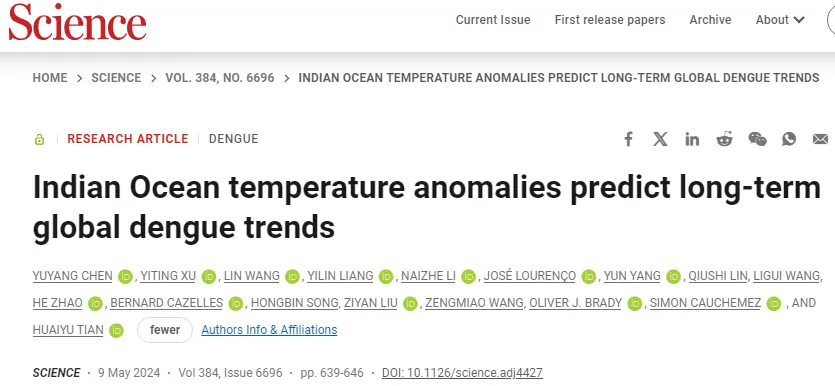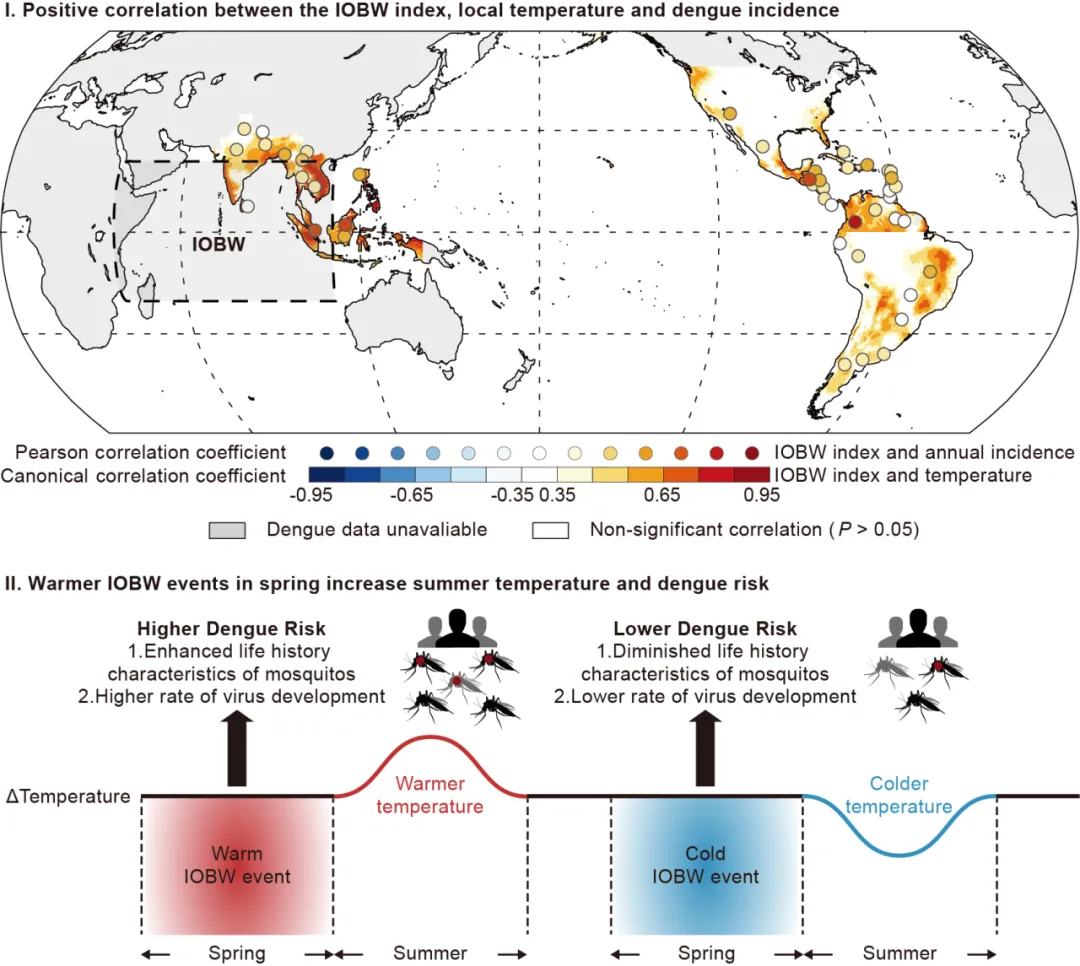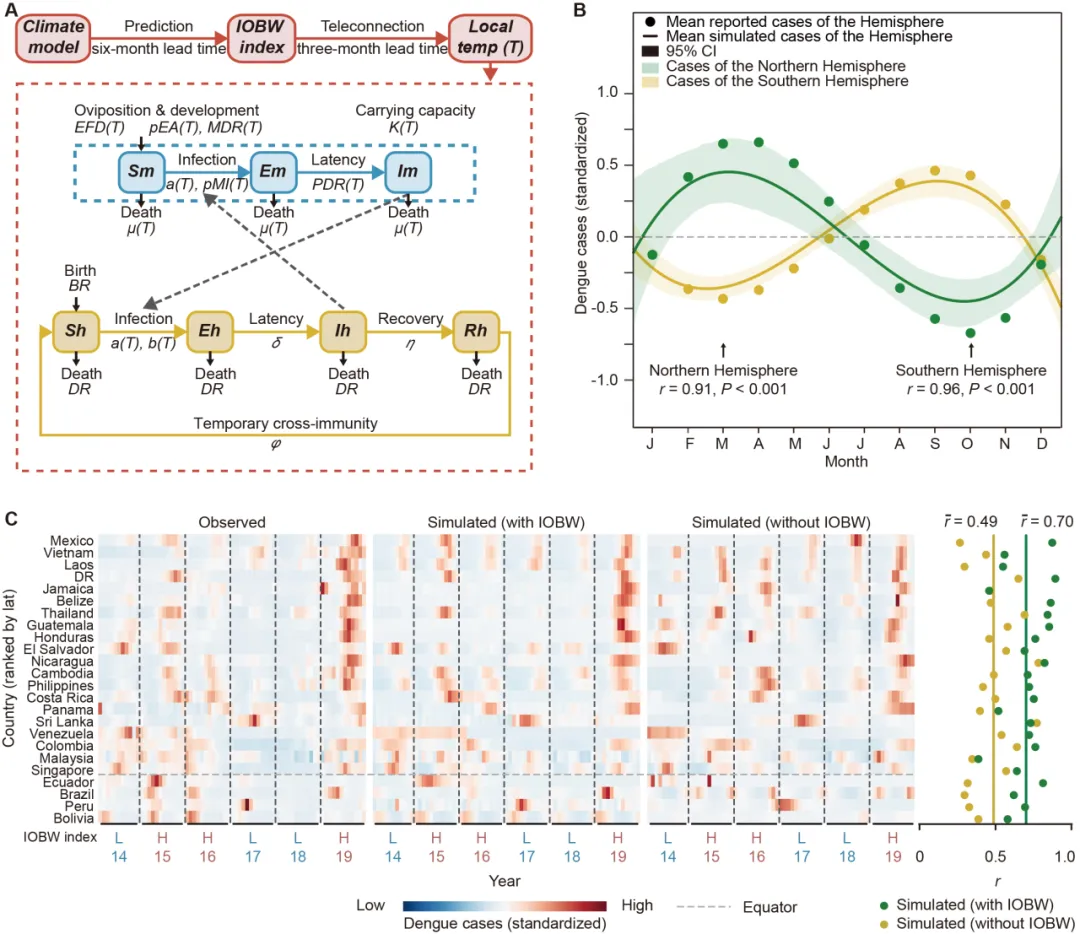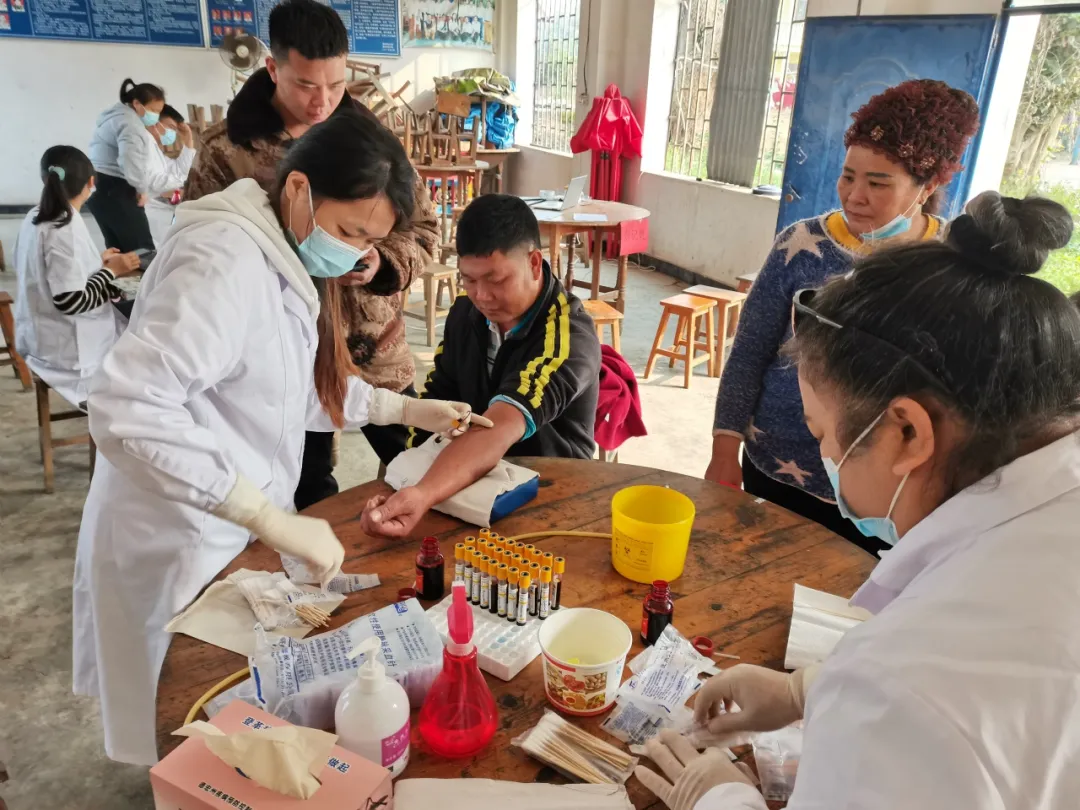Research Results from BNU Provide Critical Scientific Support for Global Dengue Prevention
On May 10, BNU Professor Tian Huaiyu’s team achieved breakthroughs in theoretical research on dengue trends prediction that can provide important scientific support for global dengue fever prevention. The relevant results, “Indian Ocean Temperature anomalies predict long-term global dengue trends ”were published in Science.

Dengue fever is an acute infectious disease transmitted by mosquitoes. In the past two decades, with global change and climate warming, the number of annual reported cases of dengue fever has increased tenfold worldwide, posing a major threat to public health. As there is no specific drugs or vaccines for this disease, dengue fever is mainly prevented by controlling mosquito vectors and sources of infection. Appropriate predictions make for preparing for epidemic prevention and reduce the risk of dengue fever outbreaks.
The IOBW index is the regional average of sea surface temperature (SST) anomalies in the tropical Indian Ocean. It is characterized by warming or cooling in the ocean and is the most dominant mode of variability in the tropical Indian Ocean. Detailed analysis of the IOBW index and the global dengue trends enabled Professor Tian Huaiyu's team to find that the IOBW index in the first three months of the dengue epidemics is a key indicator for predicting the extent and time of dengue fever outbreaks. By incorporating the IOBW index into the mechanism of dengue transmissions, the time advancing and reliability of dengue epidemic prediction are improved.
This innovation not only significantly advances the prediction period of dengue fever epidemic to nine months, but also improves the reliability of the prediction model from 49% to 70%, which is expected to improve the timeliness and accuracy of the early warning system for the disease.

Spatiotemporal correlation between IOBW index and dengue fever epidemic

Global Change and Epidemic (GCE) model
In recent years, Beijing Normal University has made contributions to revealing the occurrence patterns of multiple infectious diseases and improving the early warning and response to major infectious diseases through global change and public health research. Relevant results have been published in international journals such as Science, Nature, PNAS, and The New England Journal of Medicine, and have been selected as the world's most cited papers.

Members of the global change and public health research team of BNU
Because dengue fever is prevalent in tropical areas all year round, its baseline model parameters are difficult to determine, seriously affecting the accuracy of prediction and early warning models. Professor Tian Huaiyu’s team selected Ruili City, Yunnan Province, a city that is located in the tropical and subtropical regions on the western border of Yunnan Province as the experimental area. In the past ten years, dengue has been imported every summer and autumn and triggered local epidemics in Ruili.
The team conducts dengue fever serum antibody prevalence and virology studies among permanent residents in the experimental area every year, successfully deciphering the key parameters of dengue fever transmission, laying a foundation for the final discovery of the IOBW index and making a prediction and early warning model, and also providing risk warning tools for Ruili and the world.

Annual infection surveys for key parameters of the dengue transmission model
Reference:https://www.science.org/doi/10.1126/science.adj4427


